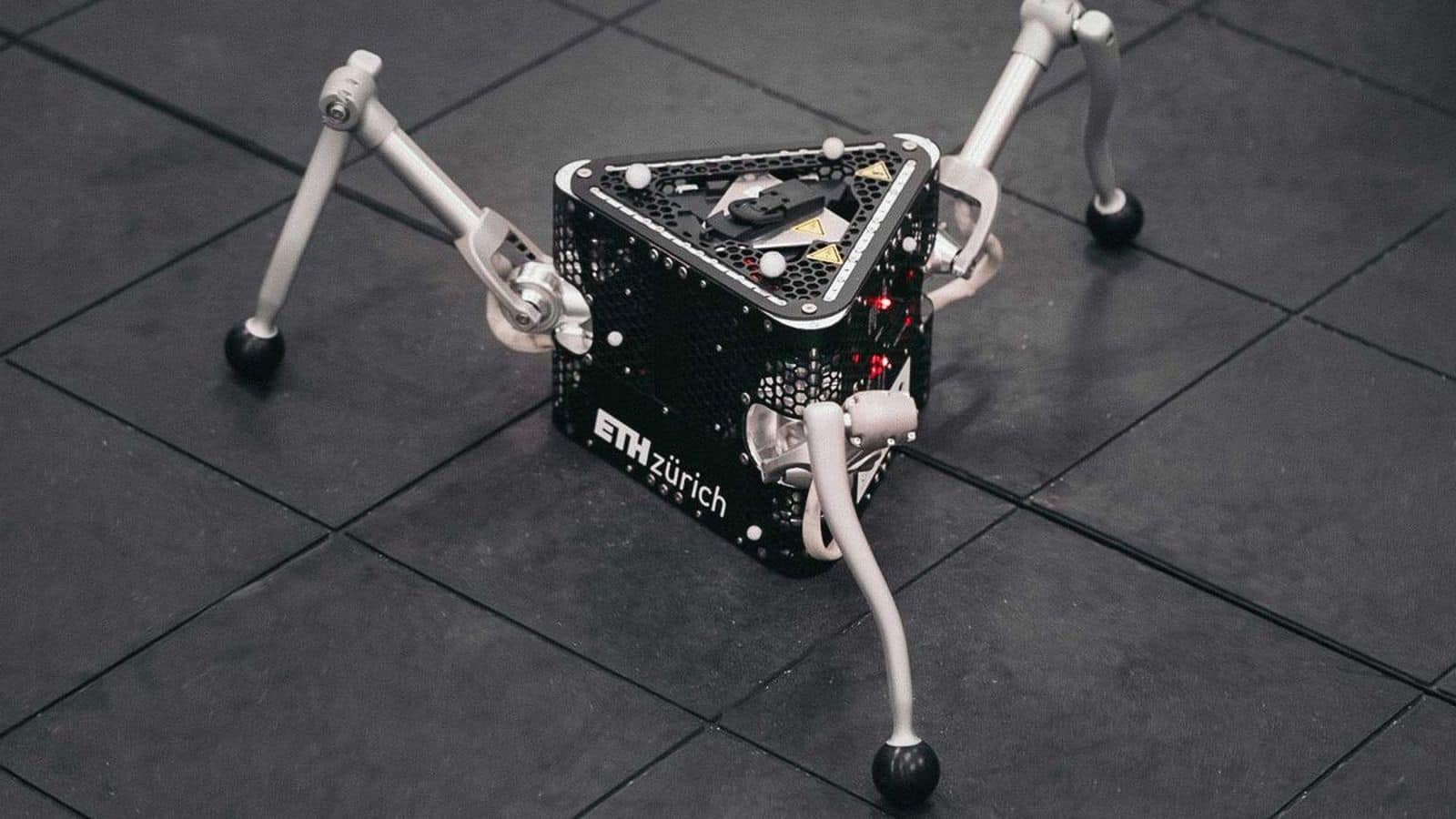
This mini robot can hop in zero-gravity to investigate asteroids
What's the story
SpaceHopper, a revolutionary three-legged robot, is set to change the way we explore low-gravity environments like those found on asteroids and moons. This groundbreaking project was initiated two and a half years ago by students at ETH Zurich University in Switzerland. Recently, the robot underwent testing in a replicated zero-gravity environment during a European Space Agency parabolic flight, according to an official statement from the university.
Structure
Unique design tailored for exploration
The design of SpaceHopper is truly unique, featuring a triangular body with a leg at each corner. Each of these three legs is equipped with a knee and hip joint. This allows the robot to push off from surfaces, kick to propel itself in space, and control its landing within a designated area. The robot has been specifically engineered to explore small celestial bodies like asteroids and moons where gravity is minimal or nonexistent.
Obstacles
How it can overcome challenges
Exploring asteroids, believed to hold valuable mineral resources and insights into the universe's formation, presents significant challenges due to the lack of gravity and atmosphere. In nearly zero-gravity environments, there's almost no traction between the wheels of the spacecraft and the surface it traverses. There's hardly any atmosphere for a spacecraft to fly through if there is one at all. To navigate these obstacles, SpaceHopper undertakes brief hops to move upwards and sideways.
Test flight
SpaceHopper accomplishes successful testing
The recent ESA parabolic flight provided an opportunity for researchers to mimic the low-gravity scenarios in which SpaceHopper may one day operate. A video taken during the test flight depicts SpaceHopper kicking each of its three legs in synchronized movements, to stay lifted during periods of zero gravity. These periods took place about 30 times per flight, lasting around 20-25 seconds each, demonstrating the robot's potential for real-world application.